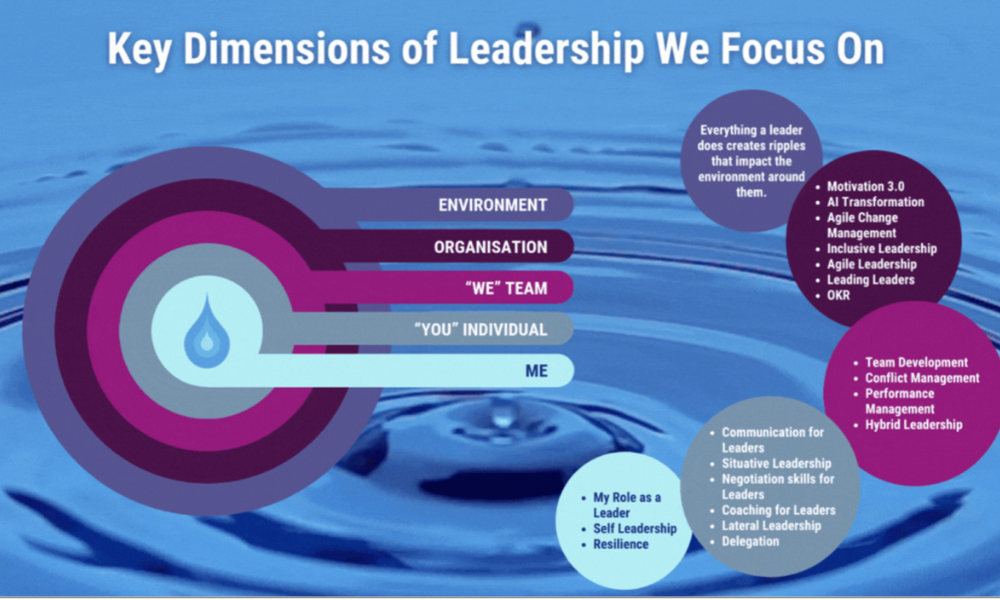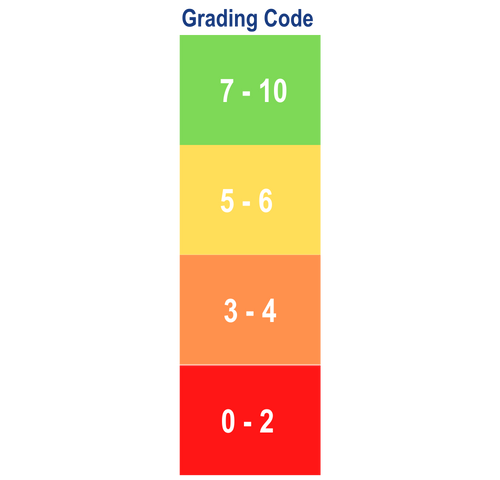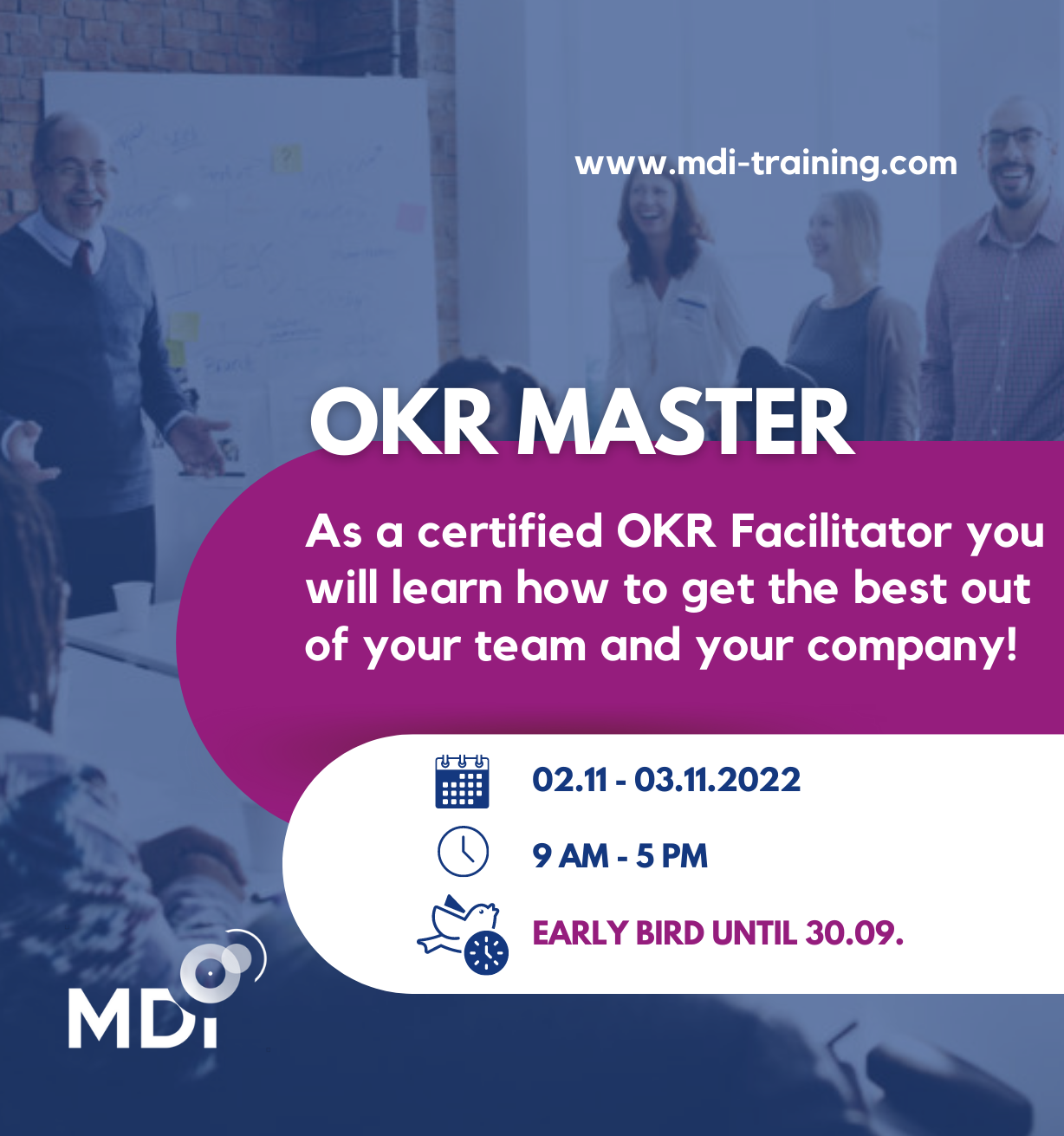
Self-Leadership: Harnessing the Power Within
Self-Leadership: Harnessing the Power Within
Do you prefer to listen to this article? Click below to access our AI-generated audio version!
Self-Leadership: Harnessing the Power Within
In today’s fast-paced and unpredictable world, we often lack control over external circumstances or how others treat us. However, we possess one powerful tool: the ability to choose how we respond.
This doesn’t mean conforming to every situation or forcing solutions. Instead, self-leadership focuses on understanding and managing our thoughts and emotions —skills that can profoundly influence our relationships and leadership abilities.
The Core of Leadership: The “Me” Circle
Imagine leadership development as a ripple effect. At the center lies the self—the starting point for influencing all outer circles: individuals, teams, organizations, and the wider environment. The “me” dimension is foundational.
How we connect with others or design organizational systems stems directly from our inner state. For now, let’s focus on this pivotal core: self-leadership.

Empathy vs. Sympathy: Choosing Connection
Empathy is a cornerstone of self-leadership, fostering connection, while sympathy can unintentionally create distance. According to Brene Brown, empathy encompasses:
- Perspective-taking: Seeing the world through someone else’s eyes.
- Non-judgment: Withholding judgment about others’ experiences.
- Emotional recognition: Identifying and validating others’ emotions.
- Feeling with others: Truly sharing in their emotional experience.
Leaders often struggle with vulnerability, imperfection, and the uncontrollable aspects of life and relationships. Our biological wiring doesn’t help—we’re programmed to detect and react to potential threats, a survival mechanism that can hinder connection. Recognizing and addressing this is key to empathetic leadership.
Cultivating “Response-Ability”
While we can’t control external events, we can control how we react—our “response-ability.” Tools like deep, conscious breathing and regular meditation can help calm the brain’s alarm system, creating space between stimulus and response. Gratitude practices can shift our focus toward the positive, reducing the weight of perceived threats.
These habits empower leaders to make decisions thoughtfully, even amid complexity and conflicting needs.
Leadership Decision-Making: Navigating Complexity
Making decisions as a leader is inherently challenging. It’s impossible to satisfy everyone, and every decision invites criticism. Understanding this reality helps us navigate conflict, a normal part of organizational life
Decisions will always carry trade-offs, but by including diverse perspectives and maintaining self-awareness, leaders can strive for the best possible outcomes.
Embracing Your Inner Team
Self-leadership also involves recognizing and harmonizing the many voices within us—our “inner team.” Each voice represents a perspective or trait, such as the Perfectionist, the Empathetic, or the Fearful. Listening to and integrating these voices strengthens decision-making and communication.

Practical Exercise:
Start by asking yourself a question, like, “Should I address this conflict?” Visualize the various inner voices involved and assign them roles or characters. For instance:
- The Perfectionist: Insists on flawless execution.
- The Fearful: Warns of potential risks.
- The Rational: Seeks logic and balance.
- The Angry: Advocates fiercely for boundaries.
Identify which voices are louder or more resistant and allow each to speak. Then, appoint an “inner team leader” to mediate, ensuring all perspectives are heard and integrated into a coherent plan.
In my own inner team, I balance voices like the empathetic, the strong, the fearful, and the rational. Each one has value, and my inner leader works to harmonize them, fostering collaboration and guiding decisions that reflect the best of all perspectives.
Conclusion
Self-leadership isn’t about perfection—it’s about awareness and intentionality. By cultivating empathy, practicing response-ability, and embracing the wisdom of your inner team, you can make decisions with clarity and confidence.
When we lead ourselves effectively, we empower others to thrive, creating ripples of positive change that extend far beyond the “me” circle.

Meike Hinnenberg
Learning & Development Consultant
Meike Hinnenberg is a trainer at MDI Management Development GmbH and specializes in communication, conflict management, diversity & inclusion, and lateral leadership.



















